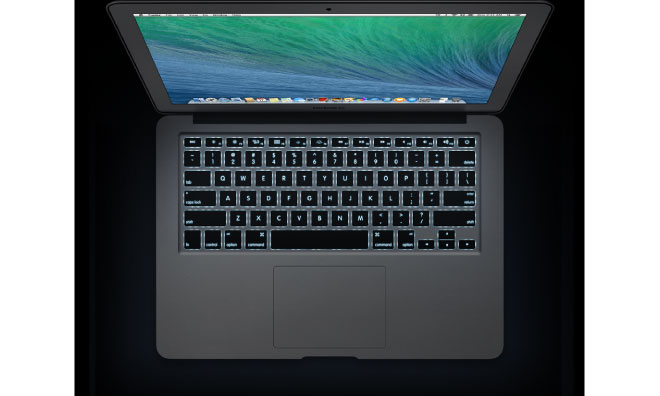An independent app developer has discovered that the latest version of Apple's desktop operating system taps the built-in ambient light sensor in MacBook Pros and iMacs to enhance user presence detection.
The ability to spin down a Mac's hard drive, turn off its display, or put it to sleep based on whether or not it is actively in use has long been a part of OS X, but until now it was based solely on mouse and keyboard input. Mavericks reportedly brings the ambient light sensor into the fold, according to the developer of clock and weather app Living Earth. The report was first picked up by The Verge.
The developer, Moshen Chen, initially believed the computer's iSight camera was doing the work, but subsequent testing by other developers revealed that to not be the case. The Verge confirmed the reports, writing that "after covering the camera but not the light sensor, we were able to delay sleep mode by changing the ambient lighting conditions."
Apple has included the ambient light sensor in every generation of MacBook Pro, as well as recent iMacs and standalone displays, to dynamically adjust the brightness of the backlights for the keyboard and display. Apple is not known to have previously used the sensor for any other purpose, though some third-party developers have taken advantage of access to the part.
Mavericks was released at Apple's Oct. 22 special event, and has been swiftly adopted by Mac users. Data shows Mavericks' adoption rate climbing at three times the speed of its predecessor, OS X 10.8 Mountain Lion.
 Shane Cole
Shane Cole




-xl-m.jpg)



 Thomas Sibilly
Thomas Sibilly
 Wesley Hilliard
Wesley Hilliard
 Christine McKee
Christine McKee
 Amber Neely
Amber Neely
 William Gallagher
William Gallagher
 Malcolm Owen
Malcolm Owen

 Mike Wuerthele
Mike Wuerthele








23 Comments
I like it. I'm using the free App Caffeine...and sometimes I forget to switch it off! :)
Edit: Thought about it as I was typing...went into Caffeine's preferences and set it to 1 hr. max.
I'm an idiot! :)
"...taps the built-in ambient light sensor in MacBook Pros and iMacs to enhance user presence detection, allowing for gains in battery life and power savings." How exactly does a mechanism that *prevents* system sleep result in battery life gains and power saving. Sorry, I'm just not following the logic here.
[quote name="softeky" url="/t/160540/mavericks-uses-ambient-light-sensor-data-to-detect-movement-delay-sleep-mode#post_2429196"]"...taps the built-in ambient light sensor in MacBook Pros and iMacs to enhance user presence detection, allowing for gains in battery life and power savings." How exactly does a mechanism that *prevents* system sleep result in battery life gains and power saving. Sorry, I'm just not following the logic here.[/quote] To you have a sleep timer or do you manually set it to sleep? If it uses the ambient light sensor, it'll go to sleep when it doesn't detect movement.
I like it. I'm using the free App Caffeine...and sometimes I forget to switch it off! :)
Edit: Thought about it as I was typing...went into Caffeine's preferences and set it to 1 hr. max.
I'm an idiot! :)
HA! Then I'm an idiot, too. I never thought to do that either. :)
Keep an eye on the use of the microphone if the NSA ever releases an app.